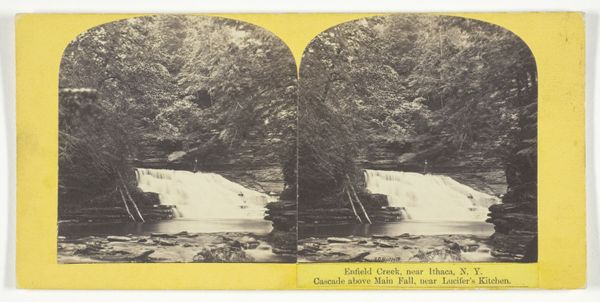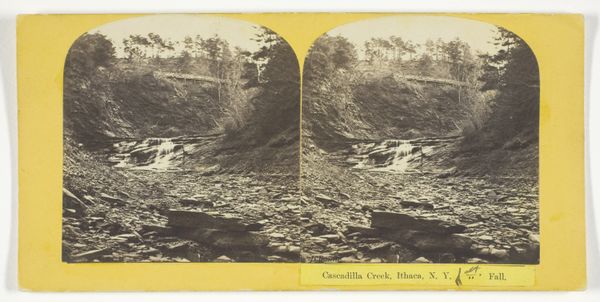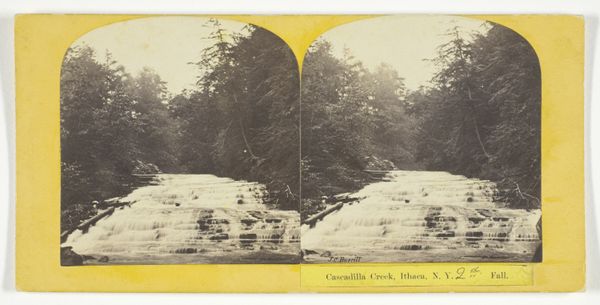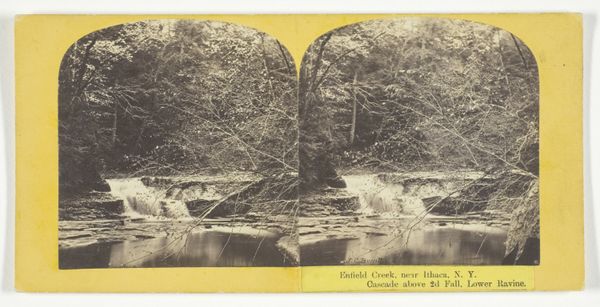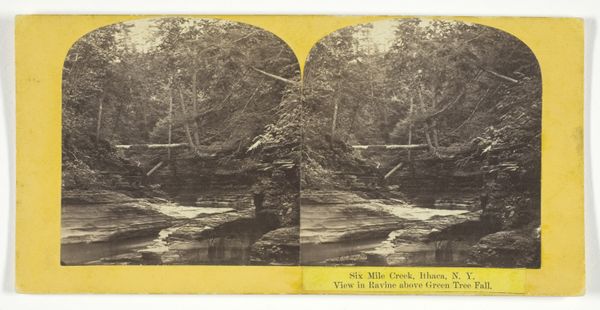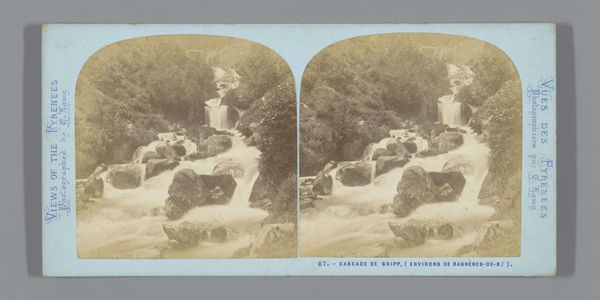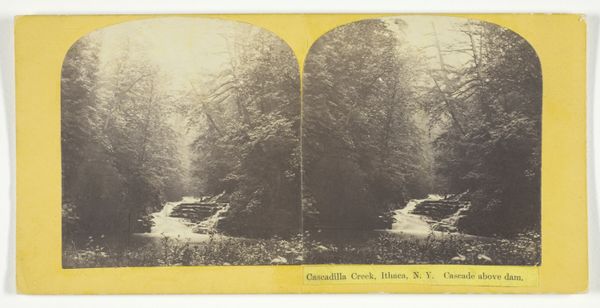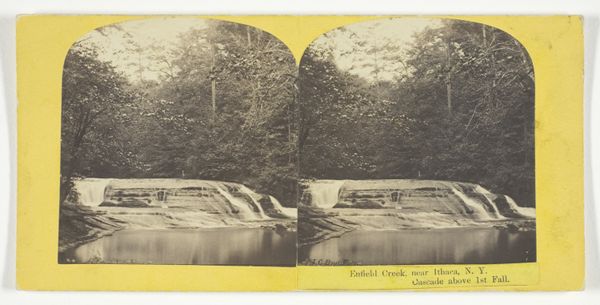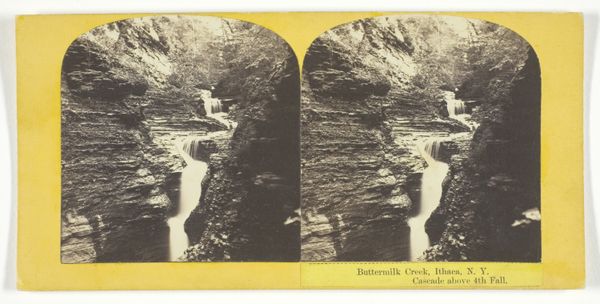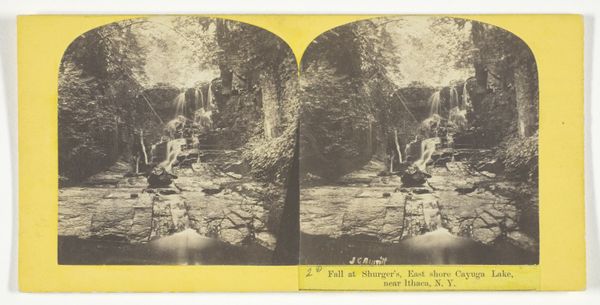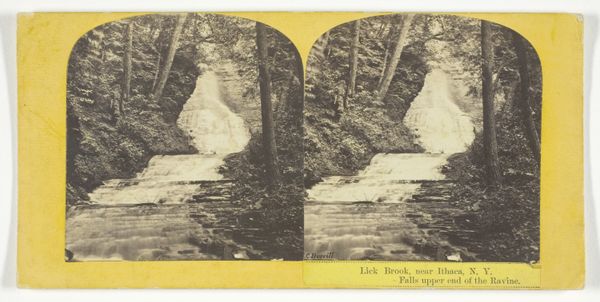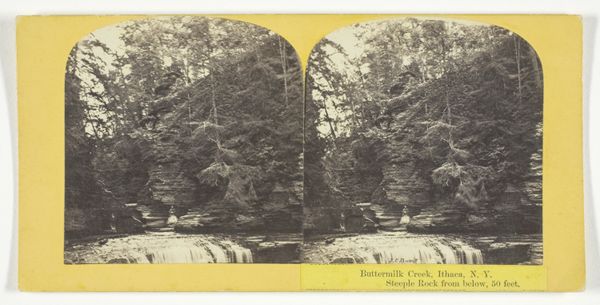
Cascadilla Creek, Ithaca, N.Y. 5th Fall, opposite Water Cure 1860 - 1865
0:00
0:00
Dimensions: 7.5 × 7.2 cm (each image); 8.4 × 17.1 cm (card)
Copyright: Public Domain
Curator: This stereograph, titled "Cascadilla Creek, Ithaca, N.Y. 5th Fall, opposite Water Cure," was created by J.C. Burritt between 1860 and 1865. It’s a gelatin silver print mounted on card stock and is part of the Art Institute of Chicago's collection. Editor: The contrast between the dark trees and white water is striking! It feels...serene, but also powerful. There's something so calming about water, and yet the image captures this strong current as well. It invites meditation on nature's resilience and healing power. Curator: That healing aspect is interesting, especially considering the title mentions "Water Cure." These natural settings became sites for medical treatments popular at the time, offering remedies away from the city and its ills. Nature became associated with ideas about wellness. Editor: So the image isn't just a pretty landscape; it reflects broader ideas about health and social anxieties during that period? Did access to these natural "cures" reflect socio-economic inequalities, since this wasn't universally accessible? Curator: Precisely. While visually harmonious and reminiscent of the Hudson River School, the work hints at socio-economic factors tied to healthcare and leisure. These scenes became commodities themselves as public access to such healing and recreational landscapes grew but remained stratified. Editor: Makes you consider who's being centered here. Is this intended for an urban audience who romanticizes nature and these spaces? It definitely makes you wonder who is reflected in this art, but more importantly, who is excluded? Curator: And furthermore, how this burgeoning landscape aesthetic shaped conservation and access to natural spaces in an unequal manner. Editor: The technical achievement is interesting, too. How the artist manages to freeze the movement of water with such clarity for the period's photographic limitations. Capturing that specific moment in time… Curator: Well, it makes you think about how photography reshaped how people looked at nature and landscape. It offers what feels like an objective and precise portrayal, furthering ideas about realism, but it is simultaneously staged. Editor: In a way, seeing a seemingly tranquil, pretty, perfect nature is a loaded, socially driven construct in and of itself. It definitely shifts my perspective, it also prompts me to consider access, which becomes vital to conversations about imagery and inclusion. Curator: This image reveals how aesthetics are inevitably interwoven with cultural and historical narratives that need critical and sustained inspection.
Comments
No comments
Be the first to comment and join the conversation on the ultimate creative platform.
